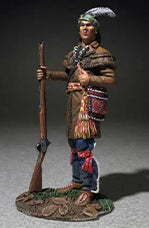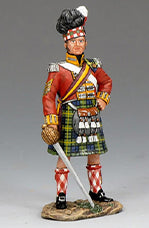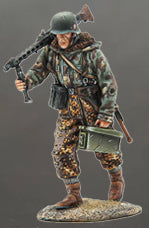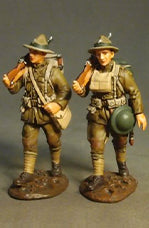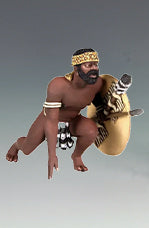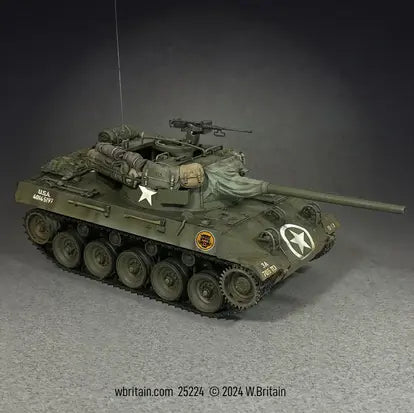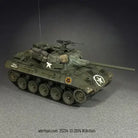25224 U.S. M18 "Hell-Cat" Tank Destroyer, 705th TD, with Crew, Ardennes 1944-45
Couldn't load pickup availability
U.S. M18 "Hell-Cat" Tank Destroyer, 705th TD, with Crew, Ardennes 1944-45
The vehicle that came to be known as the M18 was the result of a convoluted development process that began in fall, 1941. At that time U.S. Army doctrine held that a force of dedicated tank destroyers would thwart enemy armored assaults. General Lesly McNair, head of Army Ground Forces, decreed that half of these antitank forces be towed weapons, contrary to the wishes of the head of the Tank Destroyer Center, Colonel A.D.Bruce, who advocated heavily armed, very fast, self-propelled tank destroyers. In early 1943, the 76mm Gun Motor Carriage T70, was standardized as the M18. Buick, the builder of the vehicles, dubbed the new tank destroyer the Hell-Cat (notice the hyphen). The Hell-Cat first saw combat at Anzio, Italy, and from there use of the vehicle spread throughout the European campaign. While designed and built to be a tank destroyer, units in the field frequently pressed the vehicles into service as direct-support artillery for infantry. At their peak, in March 1945, there were 540 M18s in use in Europe. Those Hell-Cats are credited with the destruction of 526 enemy armored vehicles, at a cost of 216 of their own.

